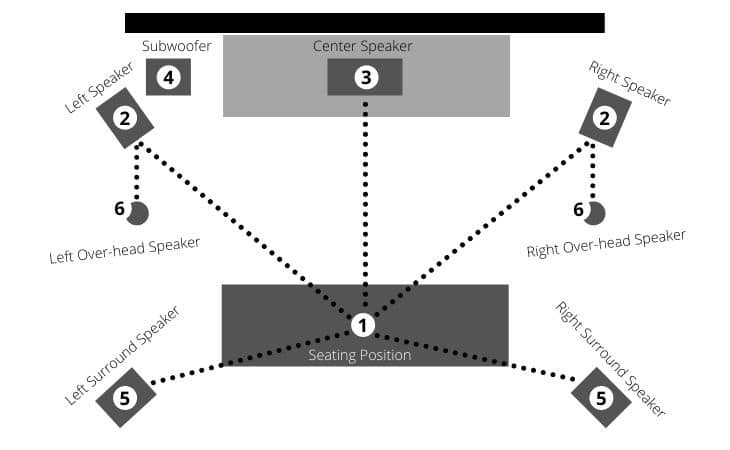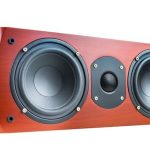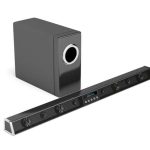Dolby Atmos is the new norm of sound technology. This advanced sound format has in recent years changed the way we listen to music and enjoy movies. For starters, Dolby Atmos utilizes the traditional surround sound setup, but with additional overhead or up-firing speakers for a more immersive listening experience.
The additional height layer adds a 3D effect to your music and movie soundtracks enabling you to enjoy them more than ever before. For you to add the Dolby Atmos effect to your entertainment experience, you’ll need to incorporate Dolby Atoms-enabled speakers into your setup.
Dolby Atmos uses a similar naming system as home theaters, but instead of using two digits, the former adds a third digit to represent the overhead channels. While there are many possible Dolby Atmos speaker layouts, the 5.1.2 is by far the most common Dolby Atmos speaker placement, but it is not uncommon to find larger setups.
In this article, we’ll explain exactly what the 5.1.2 layout is and what you need to build and enjoy the Dolby Atmos experience.
5.1.2 Dolby Atmos Speaker Placement

As we’ve already stated, 5.1.2 is the most popular Dolby Atmos layout, and it is considered the minimum setup you’ll need to create an overhead surround sound effect. The first digit represents the number of ground speakers used in the system. The second digit represents the number of subwoofers, while the last digit relates to the number of Atmos speakers used in the setup.
So, following the above explanation, we can break down the 5.1.2 as follows;
5 = Five speakers at ear level
1 = One subwoofer
2 = A pair of upward-firing/ Atmos-enabled speakers
5.1.2 Speaker Guide
To set up a 5.1.2 Dolby Atmos layout, you’ll need a home theater receiver that is compatible with Dolby Atmos and with at least nine channels. The channels are distributed as follows;
Main Left and Right Speakers
When setting up the main left and right speakers, ensure that they are angled in towards your sitting area. Ideal, both speakers should be at ear level and equidistant from the TV and your sitting position. You may want to adjust the placement angle now and then to improve the sound or achieve the set objectives.
Center Channel Speaker
In this setup, the ideal spot for the center channel speaker is directly above or below the TV. In addition, you’ll want to place the speaker at ear level to simulate sound effects coming from your screen.
Surround Speakers
In most Dolby Atmos setups, the surround speakers will often go behind the listening area. Just like front speakers, both left and right surround speakers should face towards you and be equidistant from your listening area. Also, consider placing the speakers at ear level to provide a better surround sound effect.
Dolby Atmos Speakers
To add Dolby Atmos to your home audio setup, you’ll need to incorporate height speakers. One way is by adding overhead speakers, and the second way is using up-firing Dolby Atmos speakers. Overhead speakers are installed inside the ceiling, and they work by reflecting overhead sound effects down onto the listening area.
When installing in-ceiling Atmos speakers, ensure they are a few feet in front of the seating area and aligned with the main left and right front speakers. This arrangement will help ensure a smooth transition of sound for a wider and more powerful soundstage.
On the other hand, Atmos-enabled speakers work in a similar manner as the overhead speakers, but minus the physical height channels. The speakers use Dolby Atmos Height Virtualization technology to simulate height channels while delivering lifelike sound images.
When it comes to the actual positioning, you’ll need to place the speakers next to the front left and right speakers and at or slightly above your ear level. The Atmos speakers are used as virtual height channels dedicated to reproducing overhead sound effects. These speakers cater for setups that cannot accommodate in-ceiling speaker wiring, and they also save you the hassle of having to drill holes through the ceiling.
Subwoofer Placement
As for the subwoofer, we suggest you try out different locations until you find one that yields the cleanest and tightest bass. The subwoofer can sound muddy in one area and sound remarkably clear when moved to another location.
Conclusion
Basically, the 5.1.2 setup uses the same number of speakers used in home theaters, but with the inclusion of overhead/ Atmos speakers to provide a much more immersive experience. The best part is that you can choose to install the height speakers overhead (i.e. in-ceiling) or have them sit on or incorporated into your tower speakers. This setup is best suited for small to medium-sized listening spaces. All in all, the key to having an immersive soundstage and better sonic performance is devising and implementing the best speaker layout for your specific listening space.
Michael Evanchuk is a San Francisco-based sound engineer with 20 years’ experience installing, troubleshooting, and repairing commercial, automotive, and household sound equipment. Evanchuk owns an auto stereo center, where he offers highly competitive car audio installation and repair services. He has written dozens of articles on different sound engineering topics, all of which have been published in leading journals, blogs, and websites.





